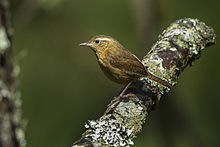Birds use calls and songs for a variety of purposes, including attracting mates, communicating with each other, and marking territory. Birds also respond to the calls of others, and use calls to identify each other and communicate information about themselves to other birds. Communication is an important part of avian behavior, both between birds of the same species and birds of different species. These songs are key to the survival and reproduction of the birds, and so are subject to natural selection just like any other trait that the birds might have. Scientists have noticed that closely related species of birds can often have similar calls. The songs that they produce sound similar, and have some or even most of their attributes in common. Of course, as bird species evolve and grow apart, they change the way they sound depending on where they are living, what kind of lifestyle they follow, and what sounds they are capable of producing. However, between birds that have only recently become separate species, there may still be a lot of similarities in how they sound.
The main goal of this study was to examine how birds respond to calls that are not from the same species, but perhaps from other closely related species of birds. The researchers here were wondering whether the degree of relatedness between birds also translated into how similar their calls were, and how (or even if) birds responded to calls from closely related species, even if they had never heard them before. For example; would birds that are very closely related have similar songs, as opposed to two birds that are farther apart? Furthermore, do birds respond more strongly to calls from closely related birds?
In order to test these questions, researchers assembled four species of wren. These species are closely related to each other, but they all live in different areas, so researchers could be sure that the birds would not have heard each other’s calls before. The family tree of the wren species was already known, so the researchers knew the degree of relatedness that each bird had to each other bird species. They exposed the birds to a series of calls: one from a bird of that species, five or six from other closely related species of wren, and one from an unrelated bird species. During this they observed the birds’ responses, including their physical behavior (movement, etc.) and their own call responses.

Brown-Throated Wren (House Wren), Troglodytes aedon, one of the four bird species used in the study. Image source: Wikipedia
They found that birds responded most strongly to calls of their own species. Furthermore, they responded strongly to more closely related species and less strongly the more distantly related they were. The researchers analyzed the songs of each bird and found that the stronger responses were for calls that were similar to the bird’s own. It seems that response of the birds is affected by both how similar the call sounds to its own and the degree of relatedness between the species, even in species that have not encountered each other before. This fits in with already observed trends that show that as bird species evolve and grow apart, their calls also ‘evolve’ and become separate.
These results tell us a lot about how evolution acts on bird communication. This study provides strong evidence for the idea that signaling between birds in the form of song is a strong area for evolution to act on. The change in calls across species is closely linked to the evolution of the species themselves. Furthermore, the fact that bird response to calls was linked to relatedness shows that birds are sensitive to the degree of separation between themselves and the bird whose song they are hearing. This is important in understanding how birds use song to signal to each other and how this signaling changes across species. It is also important in understanding how differences in song signaling could themselves be causes of evolutionary divergence, rather than simply their effects.
It’s impressive that birds will not only respond to a call that they have never even heard before, but that this response is affected by the evolutionary history of that bird. The better we understand how species evolution is linked to signaling and song production in birds, the more we can draw conclusions about how these bird species became different from each other in the first place, and how their evolution as a whole occurred.
